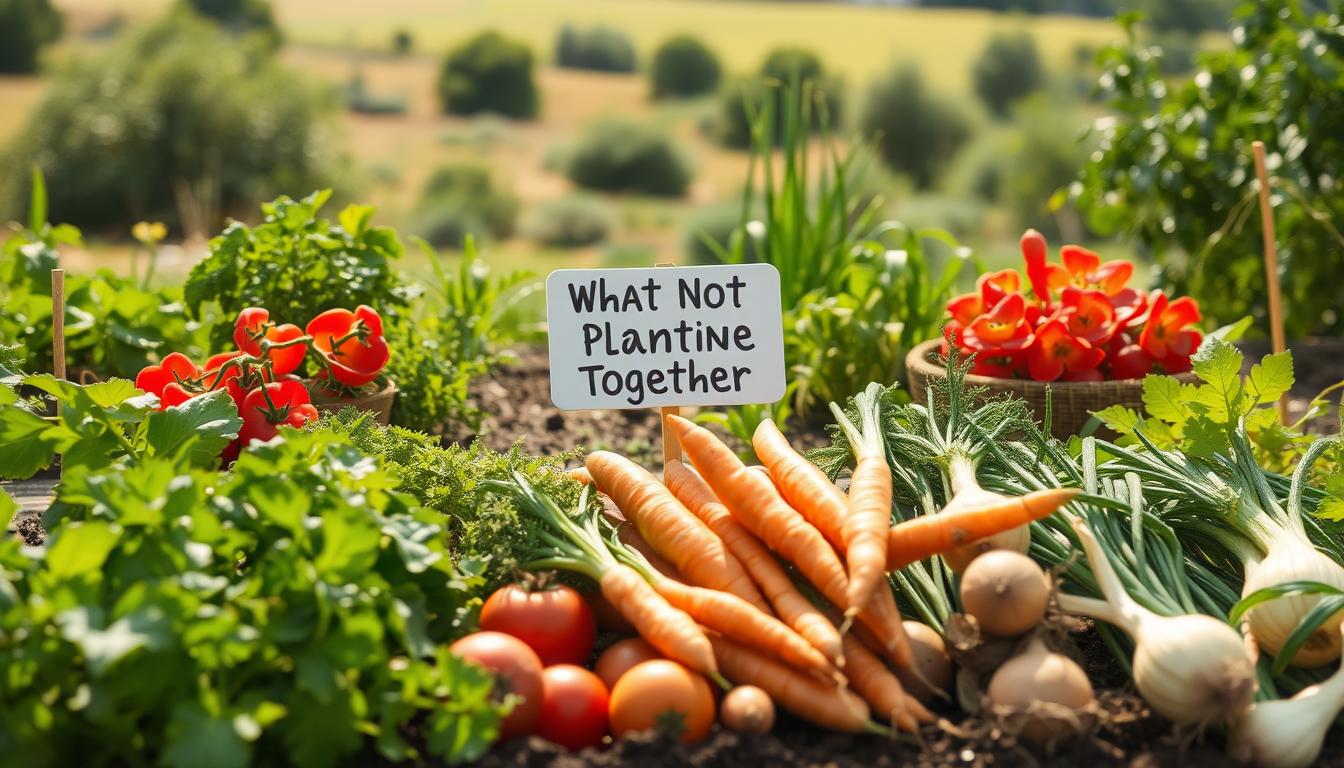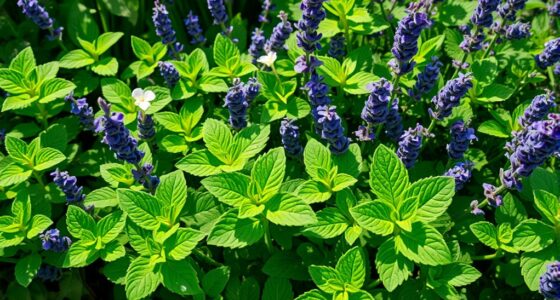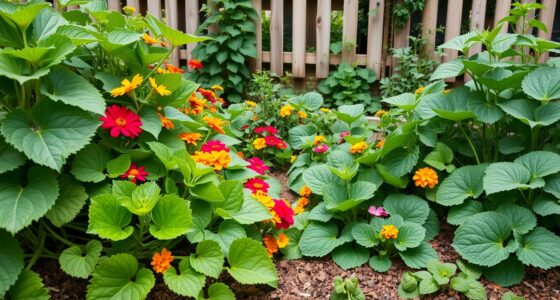Imagine stepping into your garden, surrounded by the vibrant colors and earthy scents of your hard work. The joy of nurturing your own plants is unparalleled, but the disappointment of watching them struggle can be heartbreaking. You’ve put in the time and effort, yet sometimes the results are far from what you envisioned. This is often due to what not to plant together. Understanding the bad plant pairings can keep your garden flourishing, helping you avoid common companion planting mistakes that lead to stunted growth or pest invasions. With a little knowledge on incompatible combinations, you can cultivate a thriving, productive garden, turning your dreams into reality.
Key Takeaways
- Understanding plant compatibility is crucial for garden success.
- Avoid bad plant pairings to minimize pest vulnerabilities.
- Learn which combinations lead to poor flavor or stunted growth.
- Researching what not to plant together can transform your garden.
- Companion planting mistakes can be easily avoided with expert guidance.
Why Companion Planting Matters
Understanding the importance of companion planting can significantly enhance your gardening experience. This practice not only improves the health and yield of your crops but also contributes to the overall ecosystem of your garden. By pairing plants wisely, you can harness the benefits of companion planting, leading to a more productive and sustainable gardening practice.
Benefits of Companion Planting
Companion planting brings many advantages that can transform your garden. Here are a few primary benefits:
- Pest control: Certain plants can deter harmful insects, reducing the need for chemical pesticides.
- Pollinator attraction: Flowers that attract bees and butterflies can increase the yield of nearby crops.
- Soil improvement: Some plants, like legumes, can fix nitrogen in the soil, enriching it for others.
Risks of Poor Pairings
Ignoring the risks of poor pairings can have detrimental effects on your garden. Companion planting mistakes can lead to:
- Nutrient depletion: Plants that compete for the same nutrients may weaken each other.
- Disease susceptibility: Certain combinations can create a breeding ground for diseases.
- Reduced growth: Poor pairings can stunt the growth of both plants involved.
Choosing compatible plants based on their growth habits and nutritional requirements can make all the difference. By avoiding common companion planting mistakes, you will create a thriving garden environment.

Common Vegetables to Avoid Planting Together
Understanding which common vegetables to avoid can greatly enhance your gardening success. Certain plants have incompatible relationships due to their nutrient needs and pest susceptibility. Recognizing these incompatibilities helps you avoid unnecessary challenges in your garden.
Nightshades: Tomatoes, Peppers, and Eggplants
Nightshades, including tomatoes, peppers, and eggplants, are often grown in home gardens. It is important to remember what not to plant together with these vegetables. Planting them alongside potatoes can lead to shared pests and diseases like blight. Keeping these vegetables isolated allows for healthier growth and a more bountiful harvest.
Brassicas: Cabbage and Broccoli
Brassicas, such as cabbage and broccoli, are another group to consider. These vegetables compete for nutrients, which can stunt their growth when planted near each other. To ensure these plants thrive, you should carefully assess your garden layout and avoid their close proximity to one another.
Root Vegetables and Alliums
When considering root vegetables such as carrots and parsnips, it’s essential to remember the implications of planting them with alliums like onions and garlic. Both groups share similar pests, which can lead to challenges in pest management and reduced yields. Recognizing these incompatible plant combinations helps maintain healthy and productive growing conditions.
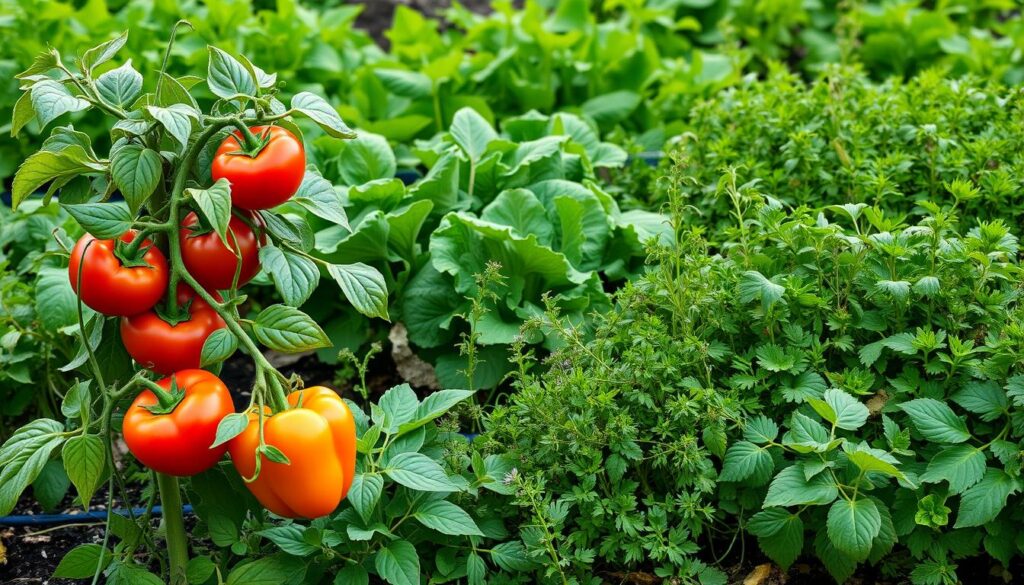
| Vegetable Type | Incompatible Companion | Reason |
|---|---|---|
| Nightshades | Potatoes | Prone to similar diseases |
| Brassicas | Broccoli | Compete for nutrients |
| Root Vegetables | Alliums | Shared pests and disease risks |
Aromatic Herbs That Don’t Play Nice
Aromatic herbs can elevate your culinary experiences, but some can create challenges in your garden. Recognizing bad plant pairings involving aromatic herbs is essential for a thriving garden ecosystem. Here are some common pitfalls that you should be aware of when planning your planting combinations.
Mint: A Must-Avoid
Mint is notorious for its vigorous growth and tendency to dominate other plants. Its extensive root system competes aggressively for nutrients and water, which can hinder the development of neighboring vegetables and herbs. When considering what not to plant together, keeping mint isolated is a smart strategy to maintain balance in your garden.
Basil and Certain Nightshades
Basil is a beloved aromatic herb, yet it can clash with some nightshade family members like tomatoes and peppers. This interaction can stifle the growth of these plants, leading to reduced yields and overall health. Understanding these bad plant pairings is crucial for maximizing the potential of your garden and ensuring each plant thrives without interference.
Rosemary’s Impact on Other Herbs
Rosemary is another herb that can disrupt the growth of nearby companions. Its dense foliage and particular nutrient demands can crowd out softer herbs, such as basil or parsley, making them less productive. Awareness of what not to plant together can go a long way in optimizing your garden’s performance.
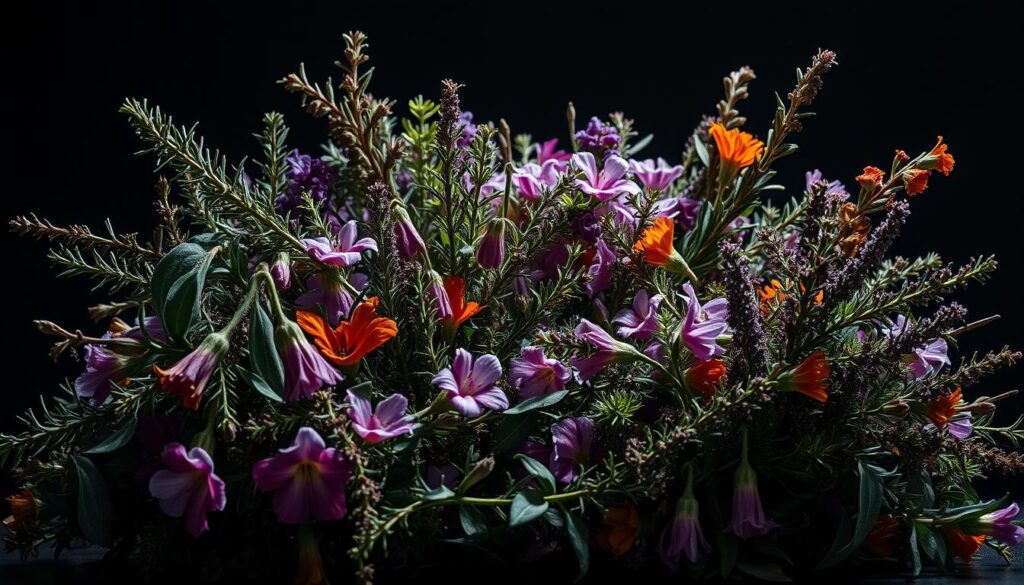
Flowers That Can Hurt Garden Health
Choosing the right flowers for your garden goes beyond aesthetics. Some flowers may actually harm your plants, leading to bad plant pairings that can affect growth and yield. Understanding which flowers to avoid is key to maintaining a thriving garden. Below are insights into a few popular flowers that could pose problems.
Marigolds: Beautiful but Problematic
Marigolds are often praised for their pest-repelling qualities, but they can also be detrimental to certain plants. When placed too closely to sensitive varieties, marigolds may inhibit growth, creating an unfortunate scenario for your garden. Recognizing flowers that harm gardens, like marigolds, benefits your design choices greatly.
Sunflowers and Their Companions
Sunflowers command attention with their towering height and vibrant blooms. Yet, they can create intense competition for sunlight and nutrients, particularly when planted with smaller crops. Understanding what not to plant together is crucial, as sunflowers may overshadow nearby plants, leading to poor growth outcomes. Awareness of these bad plant pairings can help you optimize your layout.
Nasturtiums: Good or Bad?
Nasturtiums have a reputation for being both beneficial and problematic. While they can attract pests that might target harmful bugs, they can also draw unwanted attention to your precious vegetables. Evaluating nasturtiums within your garden helps clarify whether they are a friend or foe. Stay alert to their impact on overall plant health as you consider what not to plant together.

The Importance of Soil Compatibility
Understanding soil compatibility plays a crucial role in successful gardening. Without considering the unique preferences of different plant species, you might encounter problems that stunt growth and reduce yields. Every plant has specific needs regarding pH levels and nutrient availability. The following sections explore how to navigate these complexities effectively.
Acidic vs. Alkaline Needs
When planning your garden layout, recognizing the pH preferences of your chosen plants becomes essential. Some plants thrive in acidic conditions, such as blueberries and azaleas, while others prefer alkaline soil, like asparagus and lavender. Planting species that favor opposing pH levels can hinder their growth and reduce crops. Keep an eye on your soil’s pH before deciding what not to plant together.
Nutrient Hoggers vs. Helpers
Some plant species are notorious for exhausting soil nutrients quickly. Heavy feeders like corn and tomatoes can deprive neighboring plants of vital resources. Meanwhile, certain crops, such as legumes, actually enhance soil fertility by fixing nitrogen. Understanding the dynamics between nutrient hoggers and helpers allows for better planning in your garden. This way, you can avoid creating an environment where specific plants hinder each other’s growth.
| Plant Species | Soil Preference | Nutrient Needs |
|---|---|---|
| Blueberries | Acidic | Moderate |
| Asparagus | Alkaline | Low |
| Corn | Neutral | High |
| Legumes (e.g., peas, beans) | Neutral to Acidic | Low |
| Tomatoes | Neutral to Slightly Acidic | High |

What to Avoid with Fruit Plants
When planning your garden, understanding what not to plant together is crucial for maintaining healthy fruit plants. Some combinations can lead to poor growth or attract unwanted pests, negatively impacting your yield. By recognizing these incompatible plant pairings, you can create a thriving environment for your fruit crops.
Strawberries and Cabbages
Strawberries paired with cabbages might seem innocuous, but this duo can attract pests detrimental to strawberries. The brassicas can lure certain insects that harm the berry plants, compromising your delicious fruit harvest.
Apples and Walnut Trees
Planting apple trees near walnut trees presents a serious risk due to juglone toxicity. This substance, released by walnut roots, can induce unhealthy growth in apple trees, leading to stunted development and lower fruit production.
Citrus Trees: Friends or Foes?
Citrus trees are versatile and can be beneficial when planted alongside certain crops. Test their compatibility with other plants, as they may compete for nutrients. Research specific fruit plant combinations to ensure your citrus trees thrive.
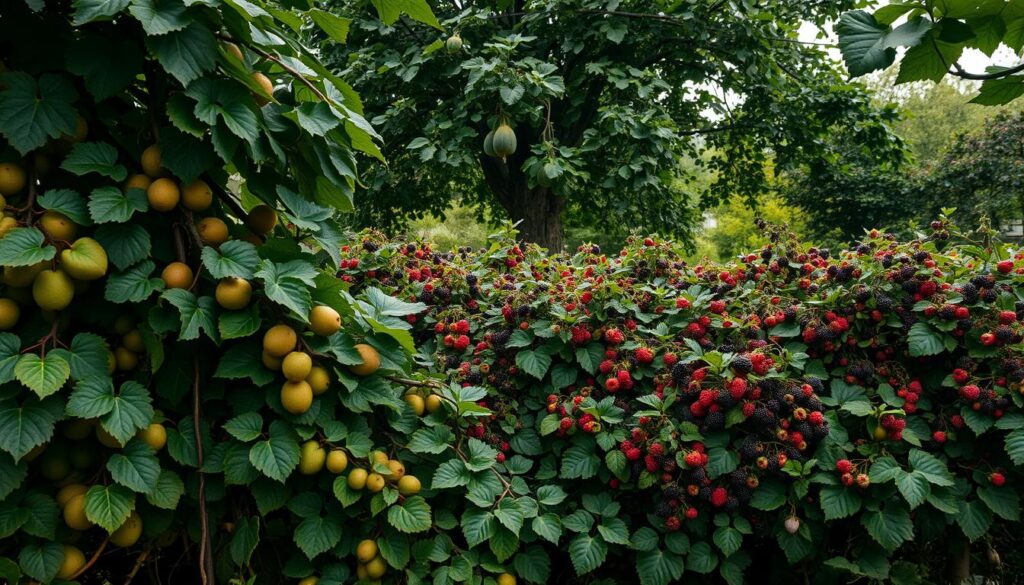
| Incompatible Pairing | Reason |
|---|---|
| Strawberries and Cabbages | Pests attracted to brassicas can harm strawberries. |
| Apples and Walnut Trees | Juglone toxicity from walnuts affects apple growth. |
| Citrus Trees | Competition for nutrients may hinder growth. |
Sowing Seeds: What Not to Mix
When it comes to sowing seeds in your garden, understanding what not to plant together can significantly impact growth and yield. Bad plant pairings can inhibit healthy development and lead to subpar results. Here are a couple of key combinations to avoid.

Legumes and Brassicas
Legumes, such as beans and peas, and brassicas like cabbage and broccoli compete for nutrients in the soil. Planting these together often results in poor growth. Brassicas can especially struggle, as they tend to take up more nutrients and may stunt the growth of surrounding legumes.
Cucumbers with Aromatic Herbs
Cucumbers thrive under certain conditions, yet when sown with aromatic herbs such as basil or dill, they can face challenges. These herbs often compete for resources like moisture and nutrients. This competition leads to reduced yield and could affect the flavor and health of your cucumbers.
By keeping these bad plant pairings in mind during your planting season, you can help create a more productive and harmonious garden environment. Your attention to compatible crops while sowing seeds will pay off in the long run.
Common Mistakes in Planting Combinations
When it comes to gardening, understanding what not to plant together is crucial for success. Many gardeners fall into the trap of common planting mistakes that can hinder their crops’ potential. Paying attention to growth patterns and spacing can make a major difference in the health and yield of your garden.
Ignoring Growth Patterns
One of the most significant bad plant pairings occurs when you overlook the growth habits of your plants. Each species has its own height and spread, which can lead to overshadowing if not considered. For instance, tall plants can block sunlight from reaching shorter crops, resulting in stunted growth. Always research your plants’ mature sizes to prevent these common planting mistakes.
Overcrowding Plants
Overcrowding often causes plants to compete for light, water, and nutrients, leading to poor health and increased vulnerability to diseases. When selecting what not to plant together, consider the space each plant needs to thrive. Allow adequate room to promote air circulation and prevent competition, ensuring your plants grow robust and healthy.
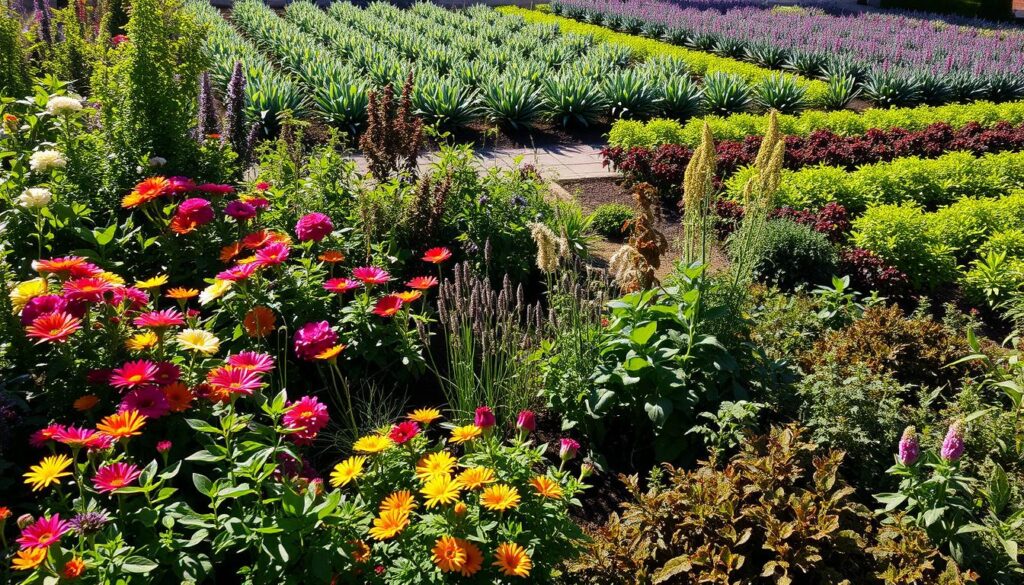
Timely Planting: When to Avoid Certain Plants
Understanding the right timing is key to successful gardening. Your planting schedule can significantly influence the outcome of your crops. Taking into account seasonal changes allows you to optimize growth and avoid issues related to compatibility and soil health. Knowing what not to plant together helps in making wise decisions that enhance your garden’s productivity.
Seasonal Considerations
Aligning your planting schedule with seasonal conditions can make a big difference. For instance, certain vegetables thrive in spring, while others prefer the heat of summer. Planting cool-season crops, like peas and spinach, during early spring will yield better results than trying to grow them in summer’s heat. Recognizing how weather patterns affect plant growth ensures that you maximize the potential of each crop.
Timing for Crop Rotation
Implementing a crop rotation strategy is crucial for maintaining soil health. Certain plants deplete nutrients in specific areas of your garden, so rotating crops each year helps mitigate this issue. For example, following nitrogen-fixing legumes with nutrient-hungry corn can enrich the soil naturally. Being mindful of what not to plant together can further enhance the benefits of crop rotation.
| Crop Type | Best Planting Season | Next Crop Recommendation |
|---|---|---|
| Peas | Spring | Potatoes |
| Tomatoes | Summer | Brassicas |
| Carrots | Early Spring | Beans |
| Corn | Late Spring | Wheat |

Quirky Plant Pairings that Don’t Work
Understanding quirky plant pairings is essential for anyone looking to cultivate a thriving garden. Certain plants, despite their appealing nature, may hinder each other’s growth. Recognizing these incompatible plant combinations helps you determine what not to plant together, preventing potential issues down the line.
Garlic and Beans
Garlic ranks as one of those surprising plants that creates complications in the garden. Its strong allelopathic properties inhibit the growth of beans. This impacts the overall yield and vitality of your garden. If incorporating beans into your planting schedule, avoid pairing them with garlic to ensure the best potential growth.
Dill’s Dance with Carrots
Dill brings its unique flavors to various dishes, yet it can create challenges when planted alongside carrots. The aromatic properties of dill may inhibit carrot growth, resulting in reduced root size and overall vigor. To maximize your garden’s productivity, steer clear of this combination and choose more compatible options.
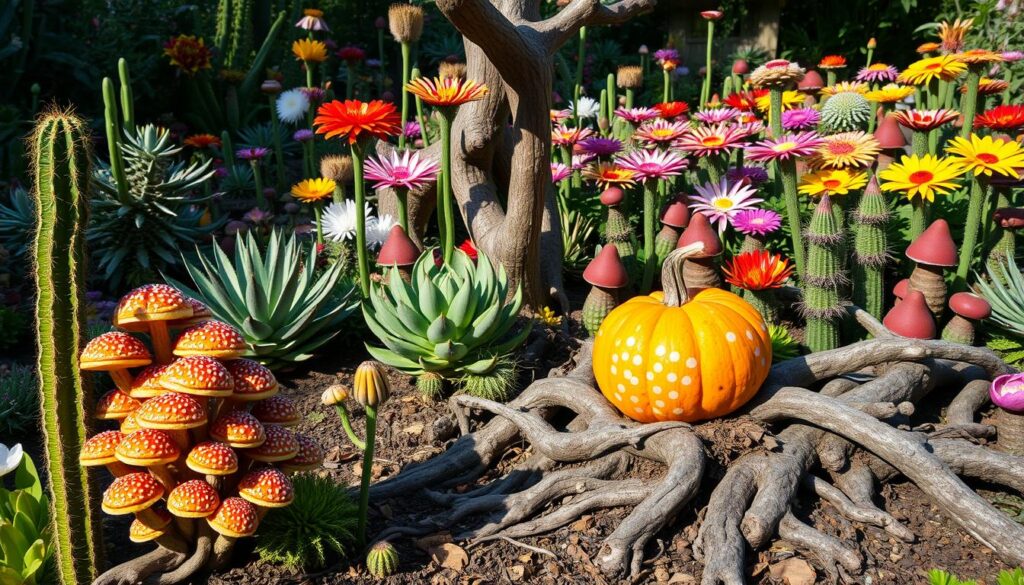
| Plant Combination | Impact | Recommendation |
|---|---|---|
| Garlic and Beans | Inhibits bean growth | Avoid planting together |
| Dill and Carrots | Reduces carrot yield | Choose different companions for carrots |
By keeping these quirky plant pairings in mind, you can create a healthier and more productive gardening experience. The right combinations foster growth while avoiding pitfalls that could impact your garden’s success.
Natural Pests and Plant Friends
Understanding the relationships between plants and natural pests is crucial for effective gardening. Certain species attract harmful insects while others help in keeping these pests at bay. Knowing what not to plant together can significantly enhance your garden’s health and productivity. By focusing on plant compatibility, you can create a balanced ecosystem that encourages beneficial insects to thrive.
Attracting Pests: What to Watch Out For
Some plants, like sunflowers, can attract natural pests such as aphids or caterpillars when planted in proximity to your other plants. This can lead to infestations that threaten the health of nearby vegetables and flowers. If you notice these harmful pests appearing, it’s time to reassess your garden layout. Keeping a close eye on which plants are positioned next to each other can prevent unnecessary trouble.
Repelling Beneficial Insects
On the other hand, certain plants repel pests and attract beneficial insects. For instance, marigolds are known to deter nematodes and other harmful species, making them an excellent companion for various vegetables. Plant compatibility plays a vital role, so integrating these helpful plants can lead to a healthier garden environment.

The Role of Pollination in Plant Pairings
Understanding the role of pollination in plant pairings is essential for achieving optimal garden health. When you consider what not to plant together, it can become clear that different plants have specific pollination needs. Differentiating between wind-pollinated and insect-pollinated plants helps ensure better plant compatibility and productivity.
Wind-Pollinated vs. Insect-Pollinated Plants
Wind-pollinated plants, such as corn and some grasses, rely on air currents to distribute their pollen. In contrast, insect-pollinated species, such as fruit-bearing plants and many flowers, depend on bees and other pollinators. Planting these types too close can lead to competition for pollinators, which may adversely affect your garden’s overall performance. By placing insect-pollinated plants in areas that attract pollinators, you promote adequate pollination without hindering wind-pollinated counterparts.
Avoiding Competing Flowering Times
Another aspect to consider in plant compatibility is the timing of flowering seasons. You want to avoid planting species with overlapping flowering times in order to optimize pollination efforts. For example, if multiple plants bloom simultaneously, they may send mixed signals to pollinators, leading to lower fertilization rates. Instead, you can create a staggered blooming sequence that allows for continuous pollination throughout the growing season. This thoughtful approach will increase overall yields and improve the chances of a successful harvest.

| Plant Type | Pollination Method | Competing Issues |
|---|---|---|
| Corn | Wind | May compete with flowering plants for air currents |
| Tomatoes | Insects | High attraction may lead to reduced visits |
| Carrots | Insects | Overlapping blooms can confuse pollinators |
| Grasses | Wind | Compete with flowering fruits for pollination service |
Combining Herbs: Smart or Silly?
When it comes to combining herbs, understanding which plants work well together can elevate your culinary creations. Certain culinary herb pairings can enhance flavors, while others may clash, leading to disappointing taste experiences. Knowing what not to plant together makes your herb garden more productive and flavorful.
Culinary Herbs That Clash
Some herbs simply do not complement each other, affecting both flavor and growth. For instance, planting mint near basil can lead to confusion in flavors. Additionally, strong herbs like rosemary can overshadow delicate herbs such as parsley. Being mindful of these combinations not only improves your dishes but also ensures a thriving garden environment.
Medicinal Properties and Compatibility
Herbs with medicinal properties can also influence their compatibility. For example, chamomile and mint, while popular in teas, may not thrive together due to competing resource needs. Evaluating these dynamics is essential for successful herb gardening. Ultimately, knowing the medicinal benefits and potential clashes enhances your understanding of combining herbs effectively.
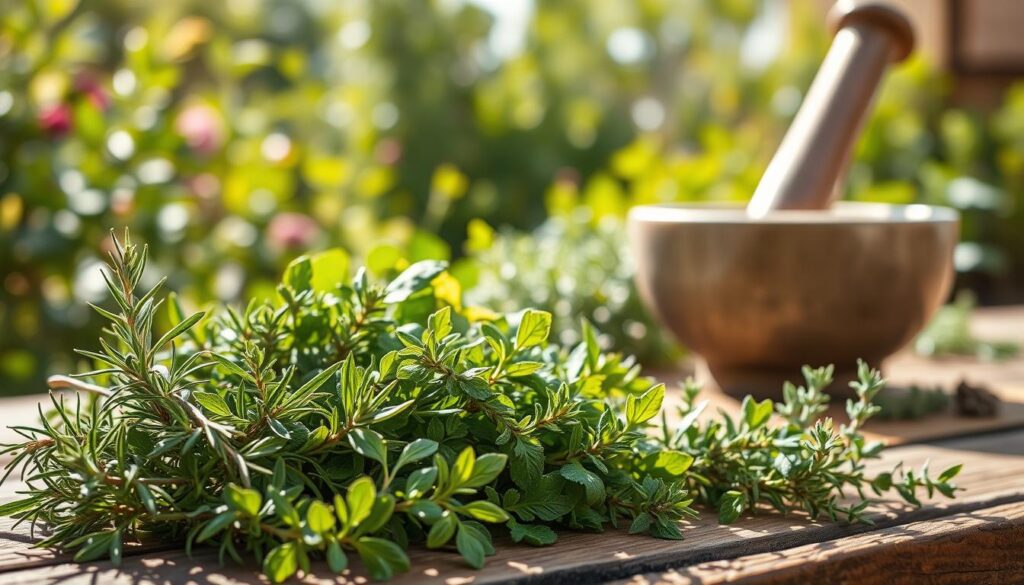
Adapting to Your Local Climate
Understanding local climate adaptation is essential for effective gardening. Different regions experience varying climate effects, making it important to know what not to plant together based on your specific environmental conditions. This knowledge will help you create a thriving garden tailored to your locality.
Zone-Specific Plant Pairing Mistakes
Each USDA hardiness zone presents unique challenges and opportunities. You might find certain plants thriving wonderfully in one zone, while they falter in another. Familiarize yourself with your zone to prevent common mistakes, such as:
- Planting tropical varieties in colder areas
- Combining heat-sensitive plants in extremely warm climates
- Ignoring local pests that may affect specific pairings
Microclimates and Their Effects
Microclimates can significantly influence your gardening success. Even within a single yard, weather patterns may vary. For instance, areas with south-facing walls receive more sunlight and heat, while shaded spots may remain cooler. When considering what not to plant together, keep the following in mind:
- Plants that thrive in full sun may not perform well in shaded corners.
- High humidity regions can encourage mold in certain plant pairings.
- Dry areas may require water-efficient plants, making some combinations incompatible.
Overall, adapting your gardening plans to local climate and microclimate conditions enhances the potential for success. Make informed decisions to cultivate a lush garden that showcases the best of what your environment can offer.

Your DIY Companion Planting Guide
A well-structured DIY companion planting guide can significantly enhance your gardening experience. By utilizing effective pairing resources, you can cultivate a harmonious garden that maximizes yields and minimizes potential issues. Understanding what not to plant together is just as vital as knowing which plants thrive in one another’s company. This knowledge empowers you to make informed decisions when arranging your plants.
Resources for Effective Pairing
Several resources can aid you in creating a productive garden layout. Companion planting charts offer informative visuals about plant relationships. Books on gardening and online forums can also provide personal experiences from other gardeners, contributing valuable insights into successful combinations. Utilizing these effective pairing resources can lead to a flourishing garden ecosystem.
Tools for Plant Arrangement
Pairing the right tools with your gardening knowledge enhances your planting strategies. Consider using garden planners or spacing tools to optimize your arrangement. These tools can assist in visualizing the layout, ensuring that each plant has the best chance to thrive. With the right approach in your DIY companion planting guide, you will cultivate a vibrant garden while avoiding common pitfalls associated with what not to plant together.
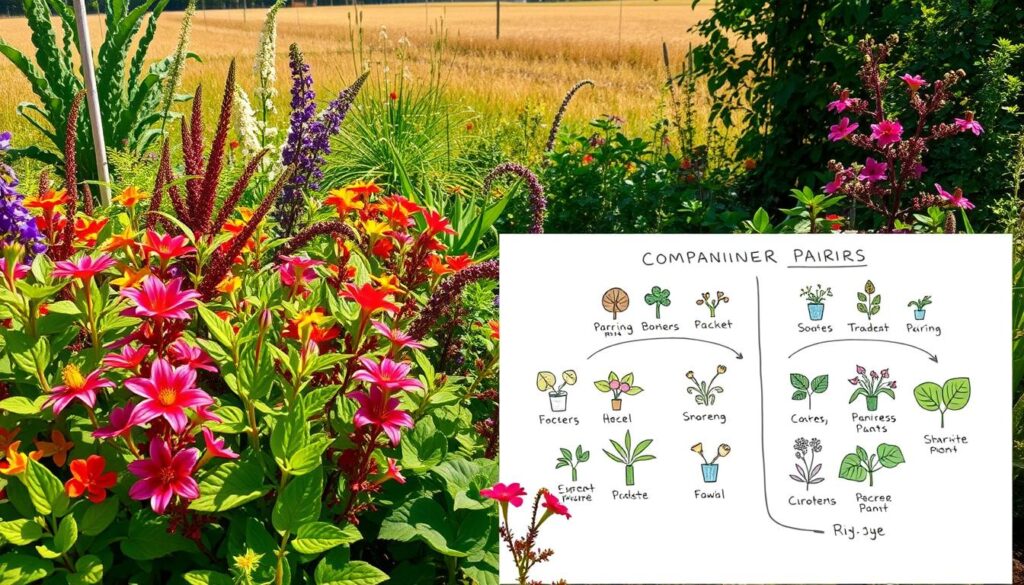
Final Thoughts on Planting Combinations
As you engage in your gardening journey, it’s essential to periodically conduct a garden layout reevaluation. This process allows you to uncover incompatibilities that may have slipped through the cracks during earlier planting seasons. By taking a step back and observing your garden, you can identify which combinations of plants thrived and which struggled, guiding you toward better choices in the future.
Reevaluating Your Garden Layout
Reflecting on past experiences is crucial for successful gardening. Learning from mistakes helps you understand what not to plant together, enabling you to develop more effective strategies. Consider keeping a gardening journal to track plant performance, challenges faced, and successful pairings. Through continuous education about plant relationships and proper combinations, you’ll be more equipped to create a thriving garden that flourishes year after year.
Learning from Mistakes
Ultimately, embracing the process of trial and error can lead to gardening success. Don’t hesitate to revisit and revise your planting strategies based on personal lessons learned. By staying informed and adaptable, your passion for gardening can transform into a fruitful endeavor, with each season providing new insights on how to optimize your garden layout and improve your choices for the future.
